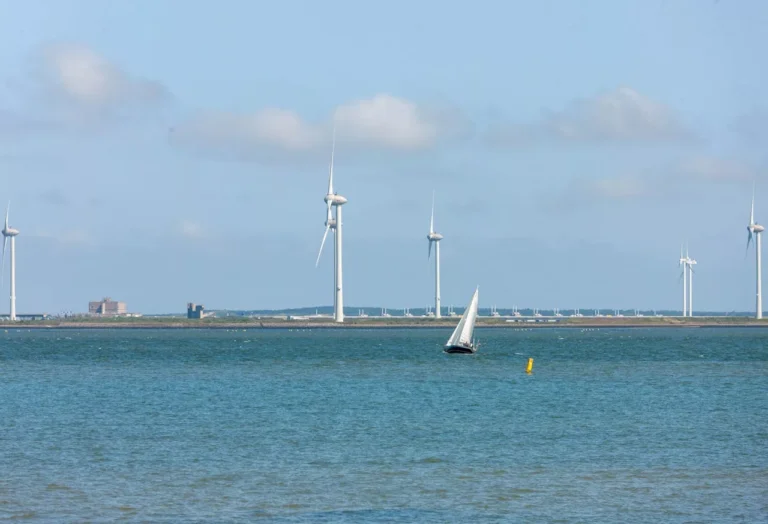
National Grid Submits Planning Application for Norwich to Tilbury Transmission Upgrade, Paving the Way for Stronger, Greener Energy Infrastructure in East Anglia and Beyond
National Grid has formally confirmed that it has submitted a major planning application to the UK Planning Inspectorate for the construction of a new high-voltage electricity transmission network stretching from the Norwich Main substation in Norfolk, through Bramford substation in Suffolk, and terminating at a newly proposed Tilbury North substation that will connect to the existing Tilbury substation in Essex. This ambitious development, known as the Norwich to Tilbury Project, represents one of the most significant electricity transmission upgrades in the region’s history.
At its heart, the Norwich to Tilbury project is designed to unlock the vast renewable energy potential of East Anglia, a region often referred to as a renewable powerhouse due to its abundant offshore wind resources and growing onshore clean energy generation capacity. Despite this strength, East Anglia has historically suffered from limited transmission infrastructure, meaning that much of the renewable energy generated could not be efficiently transported to the regions and consumers who most need it. The project aims to solve this bottleneck by creating modern, resilient transmission capacity that matches the pace of Britain’s energy transformation.
Part of the Great Grid Upgrade
The Norwich to Tilbury project does not stand alone but is part of The Great Grid Upgrade, the largest overhaul of the electricity transmission system in generations. This initiative consists of 17 major infrastructure projects across England and Wales, all with the shared goal of ensuring that Britain can deliver more homegrown, sustainable energy directly into the grid. The upgrades will help meet the surging demand for electricity, improve regional and national resilience, and support the UK’s commitment to a low-carbon future.
By expanding and modernizing the grid, National Grid and its partners aim to provide cleaner, more affordable energy, strengthen the country’s energy security, and generate substantial economic benefits at both the local and national levels. Jobs will be created through construction, supply chain activity, and ongoing maintenance. In parallel, the expansion will provide local communities with new opportunities, positioning East Anglia as both a renewable energy hub and a driver of economic growth.

Meeting Rising Demand
Electricity demand in Britain is projected to double by 2050, driven by a combination of population growth, electrification of transport, the decarbonization of heating, and the expansion of data centers and other energy-intensive industries. Without new infrastructure, existing grid capacity will simply not be sufficient to meet future needs.
The Norwich to Tilbury project alone is expected to provide enough electricity capacity to power up to six million homes and businesses. This massive upgrade represents a cornerstone in Britain’s effort to keep pace with rising demand while ensuring that power remains reliable, sustainable, and affordable.
Public Consultation and Community Engagement
A project of this scale requires deep engagement with local communities, stakeholders, and technical experts. Over the past several years, National Grid has held multiple rounds of public consultations with local authorities, elected officials, environmental organizations, landowners, and residents. These consultations were not symbolic gestures—they have shaped the final design of the project in meaningful ways.
In total, the project received around 20,000 individual pieces of feedback. Each response was carefully considered, resulting in tangible modifications to the original proposals. For example, one of the most significant changes is the introduction of an underground cable section near Great Horkesley, close to the Dedham Vale National Landscape, a region recognized for its environmental and cultural importance. This adjustment helps protect scenic landscapes while balancing the technical requirements of a high-voltage transmission project.
By taking into account local concerns, National Grid has demonstrated its commitment to building not just infrastructure, but trust and collaboration with the communities affected.
Technical Scope of the Project
From a technical standpoint, the Norwich to Tilbury upgrade is a substantial engineering effort. It involves the construction of a 180-kilometer high-voltage transmission line, using a combination of overhead lines and underground cables. The project requires the establishment of new substations, upgrades to existing substations, and the careful integration of all components into the broader national grid system.
Environmental assessments and technical studies have been central to the planning process. By carrying out rigorous assessments, National Grid has sought to minimize environmental impacts, protect wildlife, and ensure that the project contributes to long-term sustainability goals. Mitigation strategies include habitat preservation, working with local and national wildlife organizations, and commitments to biodiversity improvements wherever possible.
Voices from the Project
Simon Pepper, Project Director for the Norwich to Tilbury development, emphasized the project’s importance in a rapidly changing energy landscape.
“As our demand for electricity grows, the way we generate electricity is changing. This project will connect our homes, businesses, and public services to sources of homegrown British energy which will lower our electricity bills in the long term and make us more energy independent,” Pepper said.
He also acknowledged the critical role that public engagement has played in shaping the project:
“We would like to thank everyone who has taken part in consultations held on the proposals. Listening to people is a key part of developing a project, and we’ve made hundreds of changes based on what we’ve heard. Community feedback has been vital in informing our final plans, which also include a commitment to working with local and national wildlife experts to leave lasting benefits and strong protections for local wildlife and habitats.”
A Milestone for the Future
The submission of the planning application represents a major milestone in the project’s journey. While significant work lies ahead, including detailed review by the Planning Inspectorate, the application signals that the Norwich to Tilbury project is moving decisively toward construction and eventual delivery.
When completed, the project will stand as a critical piece of the UK’s future energy infrastructure, connecting vast amounts of renewable and low-carbon energy from East Anglia to homes and businesses across the country. Its role in strengthening energy security, supporting decarbonization, and enabling economic development makes it not just a regional project, but a national priority.








